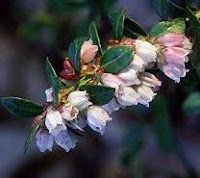Honeysuckle
Honeysuckle, common name for a plant family and for its representative genus. The family contains about 400 species of dicot flowering plants, including many ornamentals. It occurs mainly in the North Temperate Zone, particularly in China, but it also extends into tropical mountains. Its members are mostly shrubs or small trees, although some familiar members are herbaceous—for example, elderberry and some species of honeysuckle, such as Japanese honeysuckle. The leaves are opposite one another on the branch and lack stipules (leafy appendages at the leaf base); the calyx and corolla (floral whorls) have fused parts and arise from above the ovary (female flower part); and usually five stamens are borne on the inside of the corolla tube. The fruit is usually a berry. The family contains many ornamentals, such as the honeysuckle, a genus of about 180 species of usually fragrant shrubs and vines—including the trumpet honeysuckle—more than 30 of which are cultivated; the elders; the arrow
